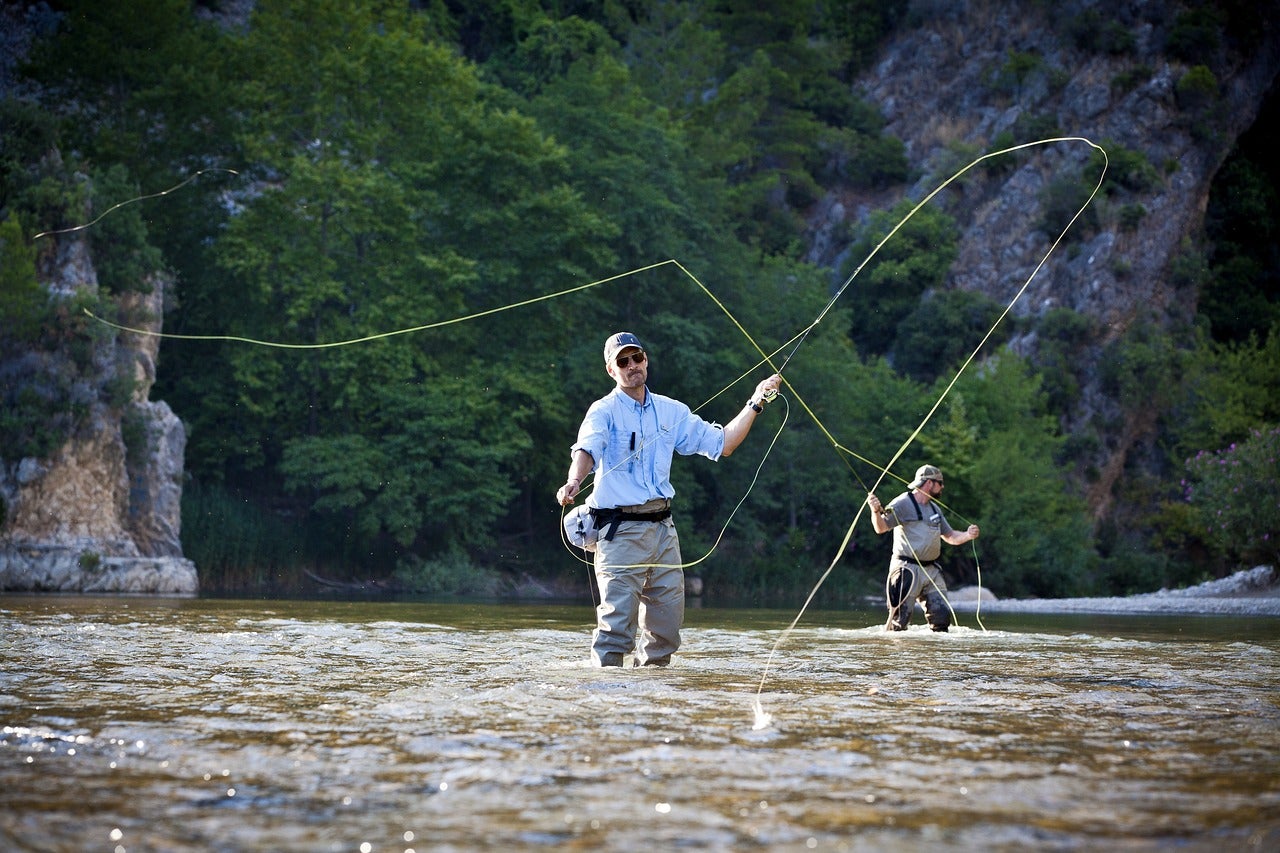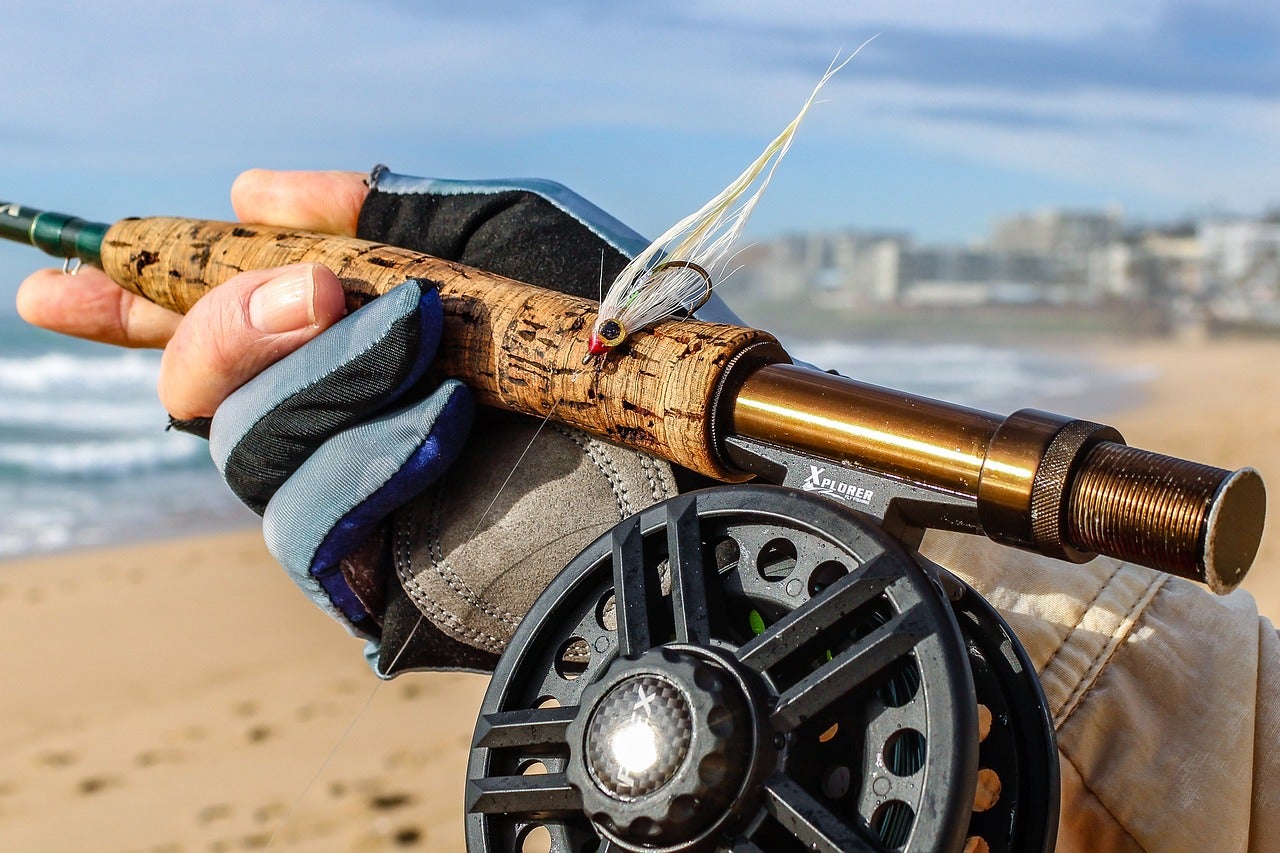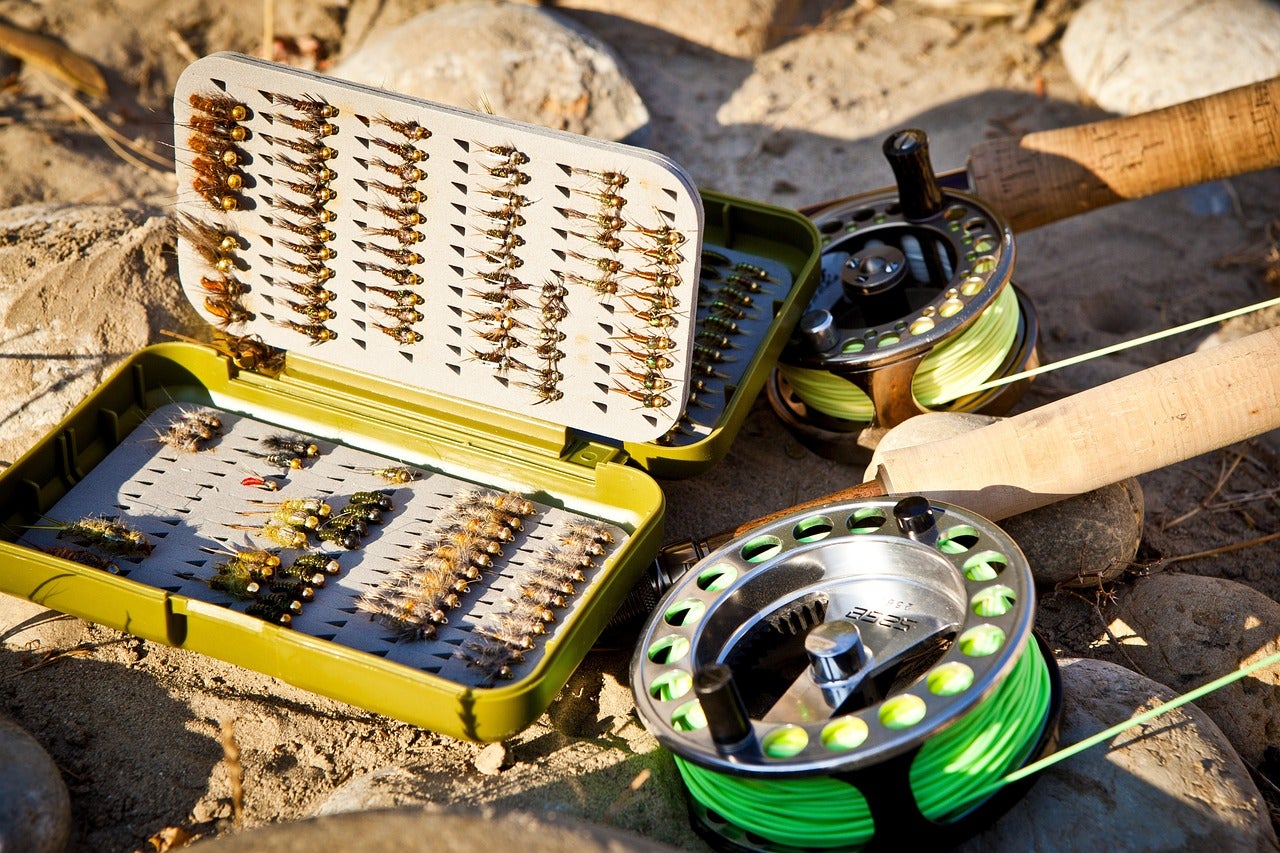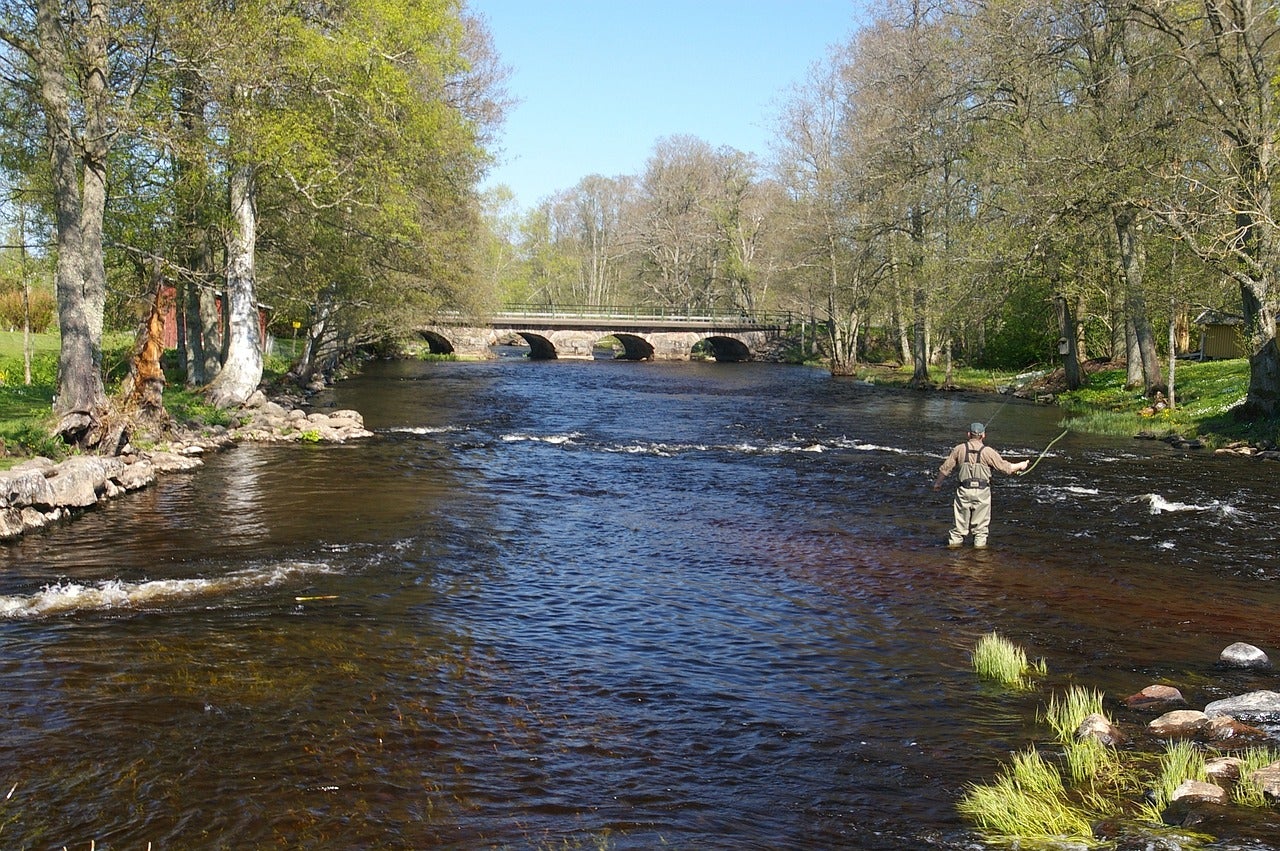Fly Fishing 101: A Beginner’s Guide to Getting Started in Fly Fishing
Travis Olander 06.15.23

Cutting through the mud and vegetation to land a bass is fun, but fly fishing can provide even experienced anglers with something new and exciting. Maybe you’re brand-new to fishing and that fly reel at the sporting goods store caught your eye. Or, maybe you’re finally growing tired of the same ole’ fishing hole you hunt with your baitcaster.
Let’s dive into Fly Fishing 101: What it is, how it works, why you should try it, and what you need to get started.
What is Flying Fishing, Exactly?
Fly fishing gets its name from the lure you use: An artificial, insect-like “fly” is cast to get the fish’s attention. Unlike regular angling, fly fishing requires resting the lure at or near the surface of the water. Because these lures are so small and light — to properly mimic an insect or small prey — it’s not the weight of the lure that drives the cast, but the line itself.
That’s why you’ll see fly fishing anglers whippin’ bright, thick lines to and fro with each cast: They’re getting all the distance they can not by leveraging the weight of the lure, but by getting the entire length of their line to carry its own weight through the air. Speaking of line, fly lines aren’t just a single spool of line, like you see on typical angling setups. Fly lines consist of four components:
- Backing. Spooled fly line that provides extra distance for big fish to run (50 to 300 yards).
- Fly line. Line unspooled from the backing, which provides the casting distance (50 to 100 feet).
- Leader. A tapered, nearly invisible piece of line that attaches to the fly line (5 to 10 feet).
- Tippet. The thinnest bit of line which connects the fly to the leader (2 to 5 feet).
Why Are There So Many Lines?
When it comes to fly fishing, casting is a more delicate, precise art than traditional angling. It’s all about the presentation of the fly: The lure needs to gently rest atop the water, and it needs to land without spooking the fish. Because the lure’s so light, it needs a light and thin line to ensure it has freedom of movement. And because the surface of the water’s so transparent and illuminated by sunlight, the line attaching the lure needs to be invisible — lest the fish see it and run.
But because fly lures are virtually weightless and made to float, the rest of the line needs to compensate for casting. That’s why an effective setup requires the light, thin, hard-to-see tippet and leader for presentation, and a heavy fly line and backing for distance.
The Fly Rod and Reel
The fly fishing rod and reel differ as much from their sink luring counterparts as the line you’ll use. Unlike spinners and baitcasters, the fly fishing reel is a large, open wheel that sits below the handle. Fly rods are always made from graphite and sport very fast (light) action. It’s the flex and whip of the rod that helps the fly line to gather momentum for effective casts.
The Typical Fly Lure
Fly lures are always small and light, but they can vary as wildly in appearance and form as any other type of artificial lure. Fly lures are categorized into three common categories:
- Dry flies. These are the most common fly lures. They’re designed to float atop the water and they’re made to look like a variety of flies and winged insects that often land on the surface of the water.
- Nymphs. Nymphs float just below the surface of the water and mimic small aquatic invertebrates.
- Streamers. These little guys can look like conventional lures, albeit light enough to float. They’re made to look like small fish, worms, or leeches.
The type of fish you’re after only partly dictates what type of fly lure you’ll rely on. One key rule of fly fishing requires “matching the hatch,” or fishing with lures that appropriately mimic the size and type of prey your target fish are after. Water temperature, time of year, location, and type of water will dictate whether it’s more appropriate to use a small or large dry fly, midge, or streamer.
The Fly Fishing Cast
Herein lies the great barrier of entry to catching fish: Casting a fly line is a bit more complicated than just releasing the spool on a spincaster and letting the weight of your lure and weights lob your line through the air. The key to mastering the fly fishing cast is understanding the intent of the cast: You’re not just trying to get good distance, here. The cast itself is part of the lure. What does that mean, exactly?
A perfect fly line cast will cause your lure to land atop the water just like a small insect does. In effect, the line’s action is tricking your target fish into thinking a juicy fly just popped into striking distance. With a good cast, the fish will only notice the lure itself landing in a lifelike fashion — but it won’t notice the tippet and leader that just landed, too.
There are plenty of different casting actions an angler can use, but all beginners should start with the basic dry fly landing cast. Orvis (who make great fly fishing gear) provides a great instructional video on how to make a good, basic fly rod cast.
(Don’t Forget The Waders)
A fly fishing expedition tends to be more successful if you hunt in shallow water — streams, rivers, small ponds, and the like. That means you’re going to need to move from the shoreline into the water column to get the perfect lure placement. And that means investing in some waders. Sure, you can “wet wade,” but it’s always a good practice invest in the right gear so you can be comfortable and focus on the cast.
Ready to dive into fly fishing? Check out our review of the new Lance Performance Fly Rod series from Greys.



